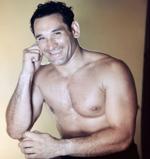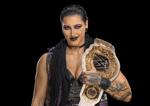Abe Jacobs, the oldest known living professional wrestler in the world, passed away early Monday in Charlotte at the age of 95.
Born Abner Robert Jacobs on June 18, 1928, the New Zealander prided himself in keeping in tip-top shape during a wrestling career that spanned nearly 40 years — three decades as a pro and one as an amateur.
In his prime he stood 6-2 and weighed in the 240-pound range. His great conditioning and keen wrestling skills made him a favorite opponent for many of the top performers in the business.
“You have to look like an athlete,” Jacobs once said. “In wrestling you have to be able to get heat, and you do that by getting the other guy over at the right time. You do a move that looks good to the people.”
Jacobs had been in declining health over the past couple of weeks, said his stepson son Reggie Hammond.
“Abe and my mom never stopped being like high school sweethearts,” he said.
Jacobs compiled an impressive record during his career, but said it probably wouldn’t have been possible without his famed move known as the Kiwi Roll. It was his “best friend” in professional wrestling, he said, and it won him the vast majority of his matches.
“I learned the hold coming along as an amateur,” he said. “One day I was working out with someone in the gym, and I happened to grapevine a leg and kind of rolled with it. The guy screamed, ‘Hey, hey, hey, my knee, my ankle.’ That’s when I knew I had something special.”

Native New Zealander Abe Jacobs was well known for his Kiwi Roll finisher. (Photo Provided)
Fans would still ask him all the time about the hold, even though Jacobs hadn’t wrestled in decades.
“It was probably the most spectacular move in the ring. People really popped if they had never seen it before, and if they had seen it a few times, they wanted to see it again," he said.
He had been asked by dozens of wrestlers who just couldn’t pull off the maneuver.
“I could teach you, but then I’d probably have to kill you,” he would laughingly tell them.
Jacobs was an amateur standout in both wrestling and rugby in his native country. Born and raised on a ranch that included a 15-acre horse pasture, he rode to school on horseback and acquired a love for the rugged outdoors.
“I used to milk about six cows, and then I’d ride to school on horseback. At that time, there were no roads good enough for cars," he said .
But wrestling was his first passion.
Jacobs caught his first big break in 1958 when the New Zealand Wrestling Union gave him a start as a professional in his own country. Encouraged by his success, the one-time New Zealand amateur champion packed his bags at the end of the 1958 season and headed for the United States.
Jacobs would travel the globe four times and wrestle on all seven continents. He would have a Hall of Fame career going up against the best in the business, facing such stars as Buddy Rogers, Johnny Valentine, Gene Kiniski, Ric Flair, Dick “The Destroyer” Beyer, Dick The Bruiser and Killer Kowalski.
Jacobs met former NWA champion Pat O’Connor, whom he considered to be the best in the business, in New York in a rare match-up that pitted two New Zealanders fighting for the world championship on foreign soil.
He wrestled in front of 36,000 fans at Chicago’s Comiskey Park in 1961.
He once held the great Lou Thesz, who rated Jacobs as a superior wrestler to even O’Connor, to a one-hour-draw.
“Wrestling has been my life,” said Jacobs. “It’s what I wanted to do as a kid. I started when I was 10 years old in school.”
Jacobs made his biggest impact in the Carolinas, falling in love with the area and eventually buying property and setting up a home base that lasted beyond his in-ring retirement in 1983. With Jim Crockett’s Carolinas-Virginia territory serving as a hotbed of tag-team wrestling during the ‘60s, Jacobs formed formidable combos with the likes of Sandy Scott, George Becker, Nelson Royal and Luther Lindsay.
Dubbed “Honest Abe,” Jacobs was well-liked and respected by his peers.
“Abe was trustworthy ... you could trust him with your life. Just a great guy,” recalled the late Sandy Scott.
The late Rip Hawk, who was a frequent opponent on the tag side, teaming with Swede Hanson against Jacobs and his partner of choice, had nothing but fond memories of the New Zealander.
“You couldn’t find a nicer man to know and to deal with. He was a class act all the way. I don’t think anybody could ever say a bad thing about Abe," Hawk said.
Once billed as the “Jewish heavyweight champion,” Jacobs was named one of the “Top Ten New Zealand-Born Wrestlers” by Fight Times Magazine. He was inducted into the George Tragos/Lou Thesz Hall of Fame in 2008. His status in the Chatham Islands was celebrated when his likeness graced its commemorative special edition Millennium $10 bill in 2000 and 2001.
Reach Mike Mooneyham at bymikemooneyham@gmail.com, or follow him on Twitter at @ByMikeMooneyham and on Facebook at Facebook.com/MikeMooneyham. His latest book — “Final Bell” — is now available at https://evepostbooks.com and on Amazon.com





0 Comments